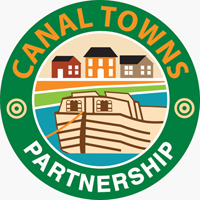Cumberland
Cumberland is a beautiful town nestled in one of the few natural passable cuts in the Allegheny Mountains of Western Maryland. It is listed in the National Register of Historic Places. In its early days it grew to become a transportation hub and a center for the railroad and timber industries. Cumberland was the starting point of the first National Road (now Route 40) and the terminus of the C&O Canal. Today it is a meeting point for the C&O Canal National Historical Park and the Great Alleghany Passage, which together form a continuous trail that runs from Pittsburgh, PA to Washington, D.C. The town is also home to the Western Maryland Scenic Railway.
In the 19th century, Cumberland was known as the “Gateway to the West”. The Potomac River’s cut through the mountains made the area one of the easiest westward passages. It was here that the C&O Canal, the B&O Railroad, and the National Road formed a transportation triad that helped the city achieve the status of the second largest city in the state and afforded it great prosperity and growth. In the late 1900s, the national economy was struggling, and many of the industries that had moved into the area in the preceding years (glass manufacturing, brewing, tires, steel) closed their doors. City leaders began to focus on tourism, and many small firms helped lead the way to new growth. Today a revitalized downtown and the Canal Place Heritage Area combine to provide an attractive center for services and tourism destinations for travelers arriving by highways or trails.

About the Canal Towns Partnership
The Canal Towns Partnership was formed in 2011 to promote mutually beneficial economic activity for the communities in and around the C&O Canal National Historical Park. To date, 11 towns have joined the partnership. For more information or to get involved, sign up for our email newsletter or follow us on Facebook and Instagram.
Photos by Janelle Muletz, Rhona Maiers, and John Gensor

